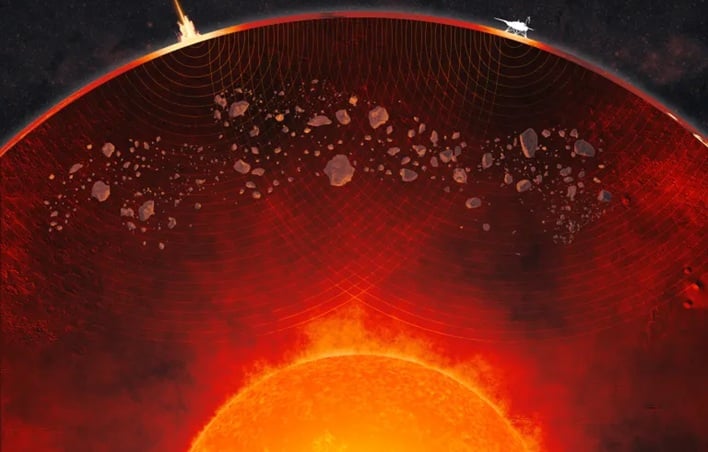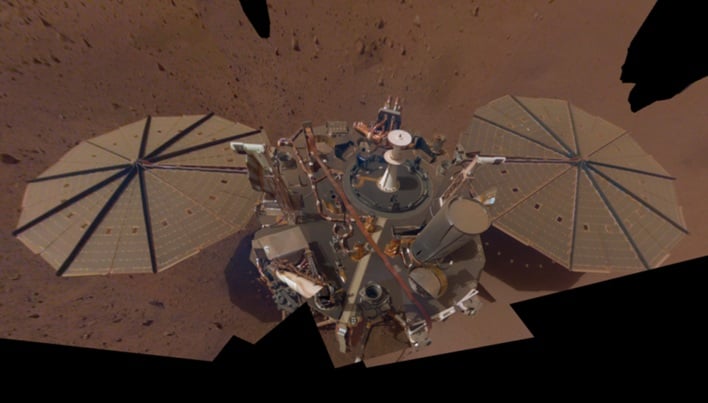NASA Peers Inside Mars And Discovers A Mysteriously Violent Martian Past
Scientists revealed that the ancient collisions that led to the formation of these gigantic rocky fragments were much more impactful than meteoroid strikes in recent times. Collisions of celestial objects in ancient times usually involved an unprecedented outburst of kinetic energy, which scientists have revealed is generally higher than kinetic energy from celestial collisions today. This is mainly due to the massive sizes of colliding celestial objects at the onset of the Solar System.

The colossal energy released from such collisions created supermassive craters and melted Mars' crust, eventually forming gigantic seas of molten rock, known as Magma oceans. At the same time, fragments of celestial objects penetrated deep into the magma that formed the molten sea. After billions of years, the fragments remained the same in physical and chemical properties; however, the magma solidified. Unlike Earth, which has tectonic plates, Mars does not have them. Due to the absence of tectonic plates on the red planet, the Martian mantle is never recycled; hence, ancient fragments are preserved deep within its interior.
These fragments in Mars' mantle were discovered after NASA scientists analyzed and made inferences from data collected by NASA's InSight lander. Launched on May 5, 2018, NASA's InSight lander set down near the Martian equator precisely at the Elysium Planitia on November 26, 2018. After landing, it embarked on a mission to collect insightful data and help unravel the mysteries behind the processes that formed the interior of all four rocky planets in our solar system: Mars, Venus, Earth, and Mercury.

The lead author of the paper, Constantinos Charalambous, said, "What we’re seeing is a mantle studded with ancient fragments. Their survival to this day tells us Mars’ mantle has evolved sluggishly over billions of years. On Earth, features like these may well have been largely erased." This proof of our earlier theory may mean that speculation about the composition of Venus and Mercury is accurate, too.

